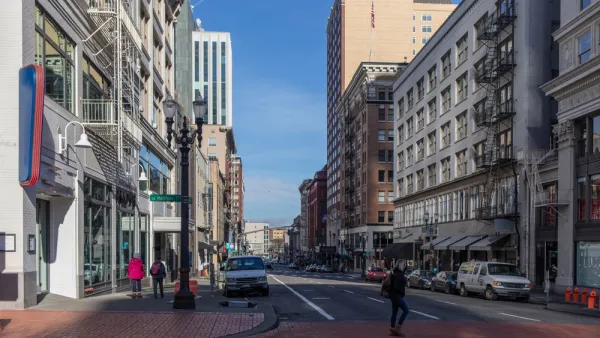1.2 million people are killed by road collisions every year, says a new report from the World Health Organization. Across the world, it's the leading cause of death for 15- to 29-year-olds. Nick Mead discusses the report's chilling findings.
"More than 1.2 million people are killed on the road every year – and more than 20 million are injured, according to a World Health Organisation report published on Thursday."
"The WHO's Global Status Report on Road Safety 2013 found that 27% of global traffic deaths are among pedestrians and cyclists – vulnerable road users who have been neglected in transport and planning policies," notes Mead. "In low- and middle-income countries the figure is closer to 33%; in some, it is as high as 75%."
"Margaret Chan, director general of the WHO, said the number of road deaths was 'unacceptably high', while injuries 'take an enormous toll on individuals and communities as well as on national economies'. Low-income families are hardest hit by medical costs and lost wages," adds Mead.
So, as car use continues to rise (particularly in the developing world), what can be done to head off this growing public health crisis?
"The report says the first step to reducing traffic mortality is a group of laws aimed at drinking and driving, speeding, and failing to use motorcycle helmets, seat-belts, and child restraints," writes "Currently, only 28 percent of countries — covering 7 percent of the world’s population — have laws addressing all of these factors."
FULL STORY: Life and death on the world's most dangerous roads – interactive

National Parks Layoffs Will Cause Communities to Lose Billions
Thousands of essential park workers were laid off this week, just before the busy spring break season.

Retro-silient?: America’s First “Eco-burb,” The Woodlands Turns 50
A master-planned community north of Houston offers lessons on green infrastructure and resilient design, but falls short of its founder’s lofty affordability and walkability goals.

Delivering for America Plan Will Downgrade Mail Service in at Least 49.5 Percent of Zip Codes
Republican and Democrat lawmakers criticize the plan for its disproportionate negative impact on rural communities.

Test News Post 1
This is a summary

Test News Headline 46
Test for the image on the front page.

Balancing Bombs and Butterflies: How the National Guard Protects a Rare Species
The National Guard at Fort Indiantown Gap uses GIS technology and land management strategies to balance military training with conservation efforts, ensuring the survival of the rare eastern regal fritillary butterfly.
Urban Design for Planners 1: Software Tools
This six-course series explores essential urban design concepts using open source software and equips planners with the tools they need to participate fully in the urban design process.
Planning for Universal Design
Learn the tools for implementing Universal Design in planning regulations.
EMC Planning Group, Inc.
Planetizen
Planetizen
Mpact (formerly Rail~Volution)
Great Falls Development Authority, Inc.
HUDs Office of Policy Development and Research
NYU Wagner Graduate School of Public Service





























